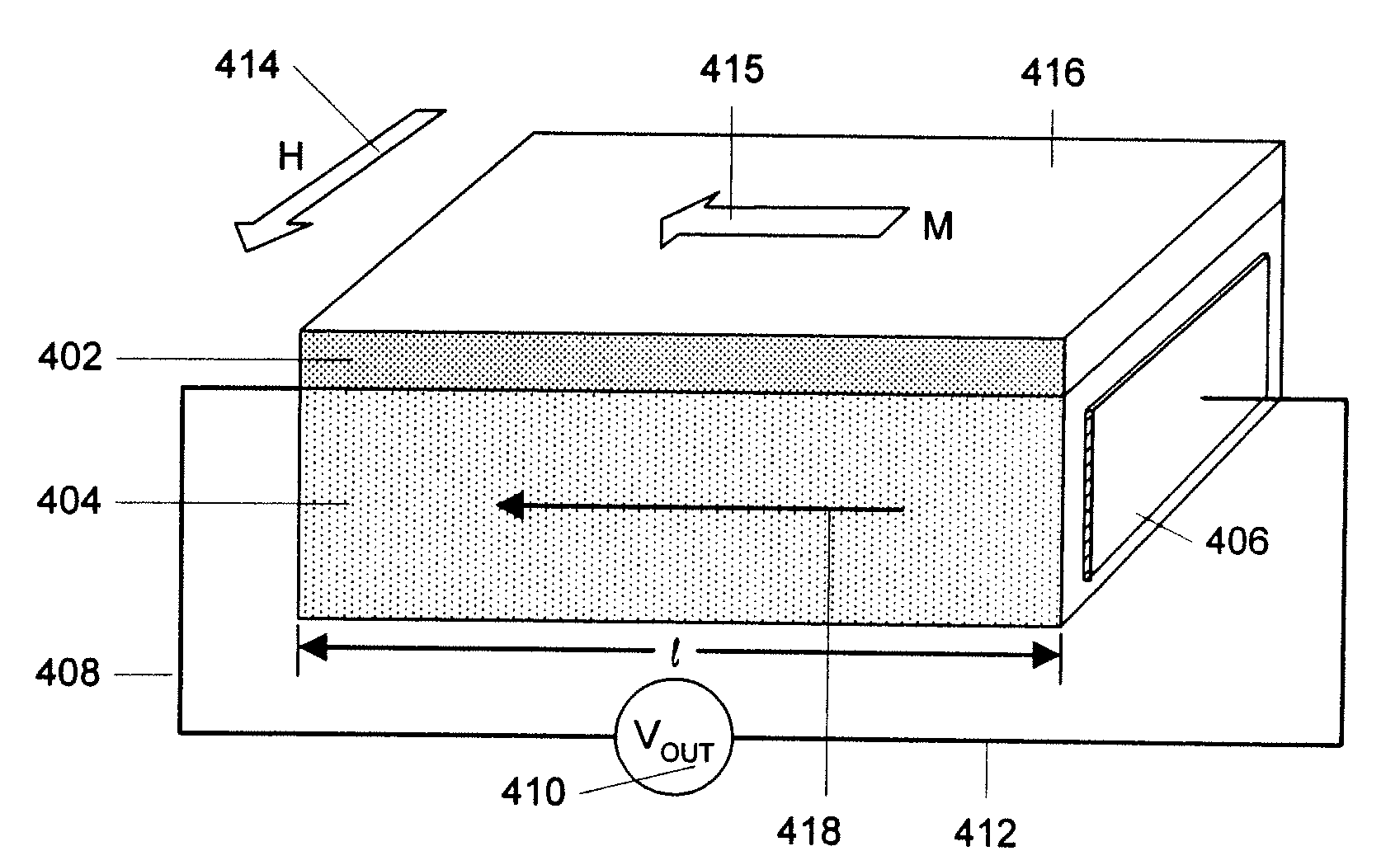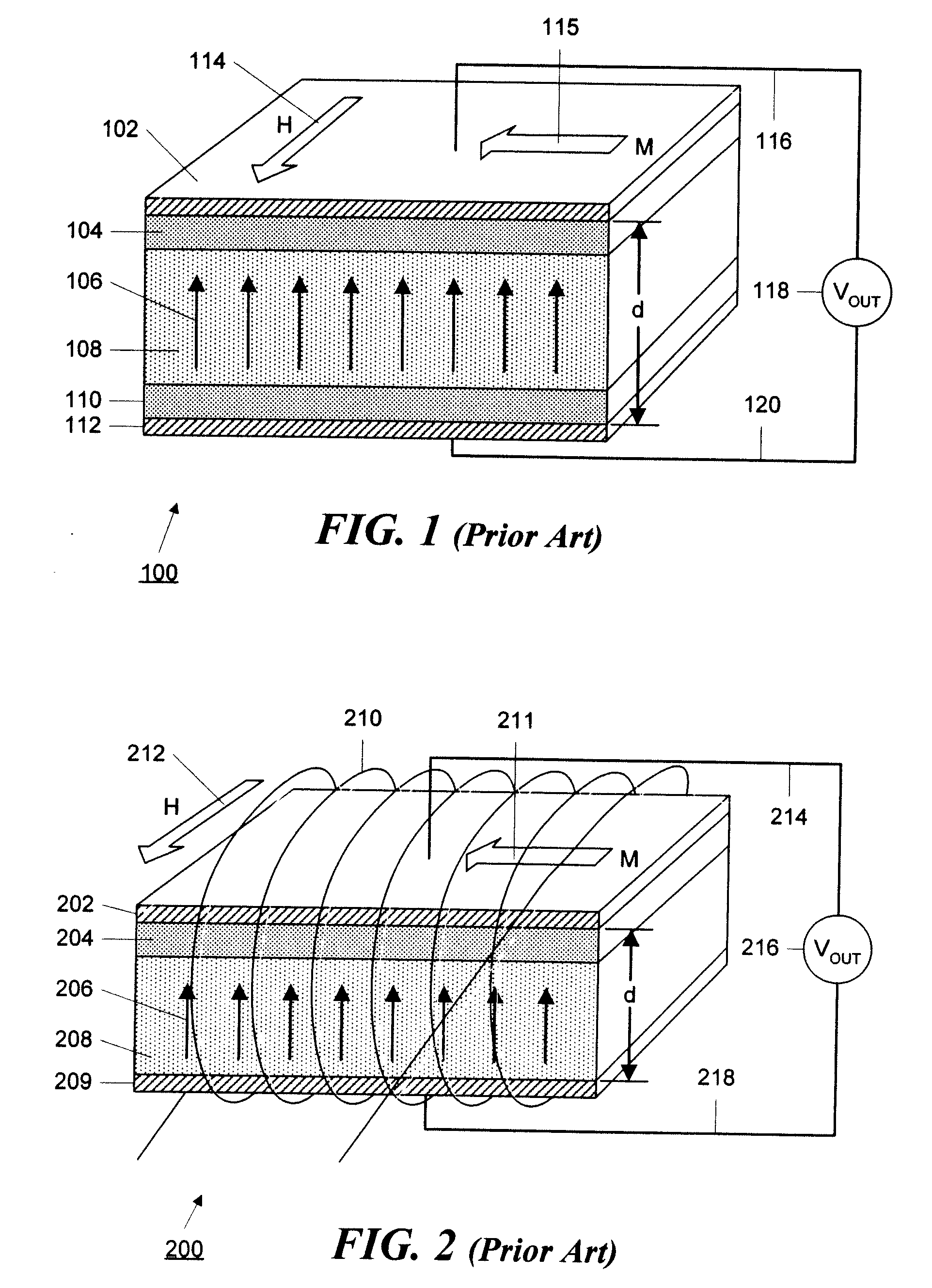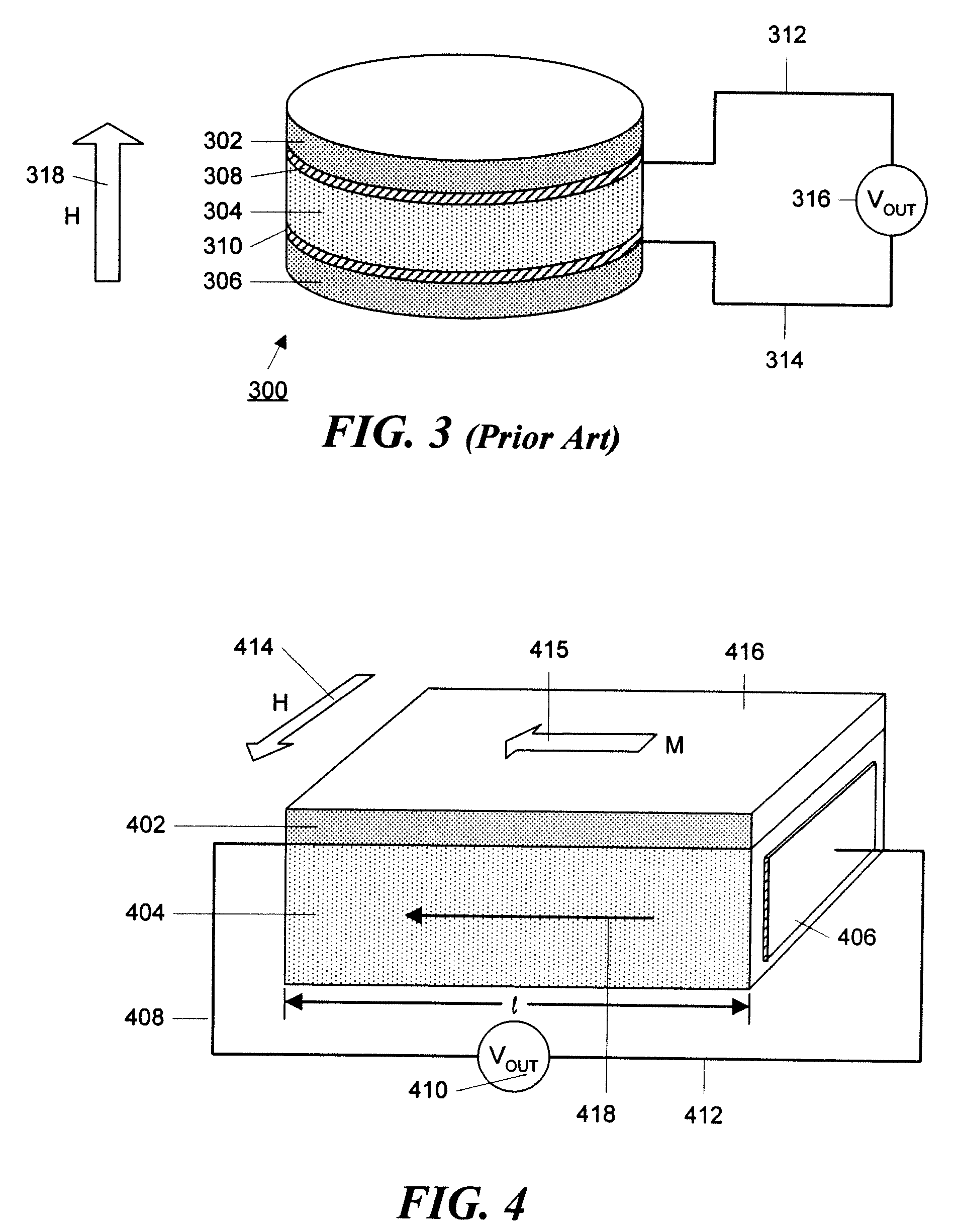High sensitivity, passive magnetic field sensor and method of manufacture
a passive magnetic field and high sensitivity technology, applied in the field of magnetic field sensors, can solve the problems of limiting the applications in which devices can be used, further limiting the application, and the field applied in this direction is less effective in rotating the magnetization than the field applied
- Summary
- Abstract
- Description
- Claims
- Application Information
AI Technical Summary
Problems solved by technology
Method used
Image
Examples
embodiment 1600
[0055]FIG. 16 illustrates an embodiment 1600 in which the electroactive layer 1604 is also disk-shaped with a circular, or elliptical, cross section. The electroactive layer has a diameter, d, and a thickness, t, with d>t. Disk-shaped magnetostrictive layers 1602 and 1603 are bonded to the top and bottom faces of the disk 1604. The electrodes 1606 and 1607 are attached to the side wall of the disk 1604.
[0056]FIG. 17 illustrates an embodiment 1600 in which the electroactive layer 1504 is cylindrically shaped with a circular, or elliptical, cross section. The electroactive layer has a diameter, d, and a thickness, t, with d1702 and 1703 are bonded to the top and bottom faces of the cylinder 1704. The electrodes 1706 and 1707 are attached to the side wall of the cylinder 1704.
embodiment 1800
[0057]FIGS. 18-20 illustrate embodiments in which the electroactive material is either a solid cylinder or a hollow cylinder with a layer of magnetostrictive material bonded thereto and electrodes applied accordingly. For example, the embodiment 1800 shown in FIG. 18 utilizes a solid cylinder 1860 of electroactive material with one or more layers 1802 of magnetostrictive material wrapped around and bonded to the outer surface of the cylinder 1860. In this embodiment, the electrodes, of which electrode 1806 is shown in FIG. 18, are attached to the ends of the cylinder.
embodiment 1900
[0058]FIG. 19 shows an embodiment 1900 similar to that of FIG. 18 with the exception that the cylinder 1960 of electroactive material is hollow and ring-shaped electrodes (of which electrode 1906 is shown in FIG. 19) are applied to the ends of the cylinder.
PUM
 Login to View More
Login to View More Abstract
Description
Claims
Application Information
 Login to View More
Login to View More - R&D
- Intellectual Property
- Life Sciences
- Materials
- Tech Scout
- Unparalleled Data Quality
- Higher Quality Content
- 60% Fewer Hallucinations
Browse by: Latest US Patents, China's latest patents, Technical Efficacy Thesaurus, Application Domain, Technology Topic, Popular Technical Reports.
© 2025 PatSnap. All rights reserved.Legal|Privacy policy|Modern Slavery Act Transparency Statement|Sitemap|About US| Contact US: help@patsnap.com



